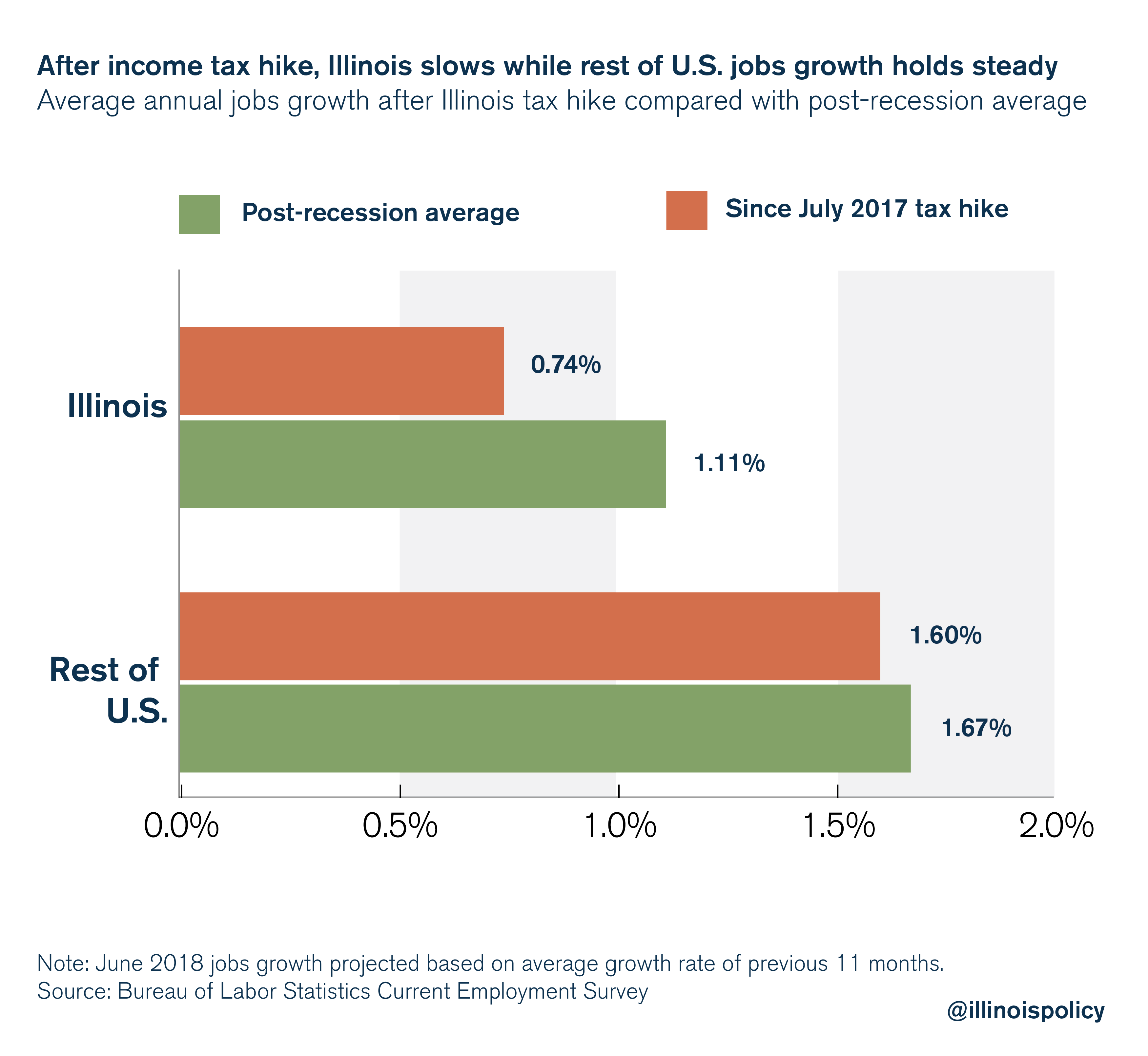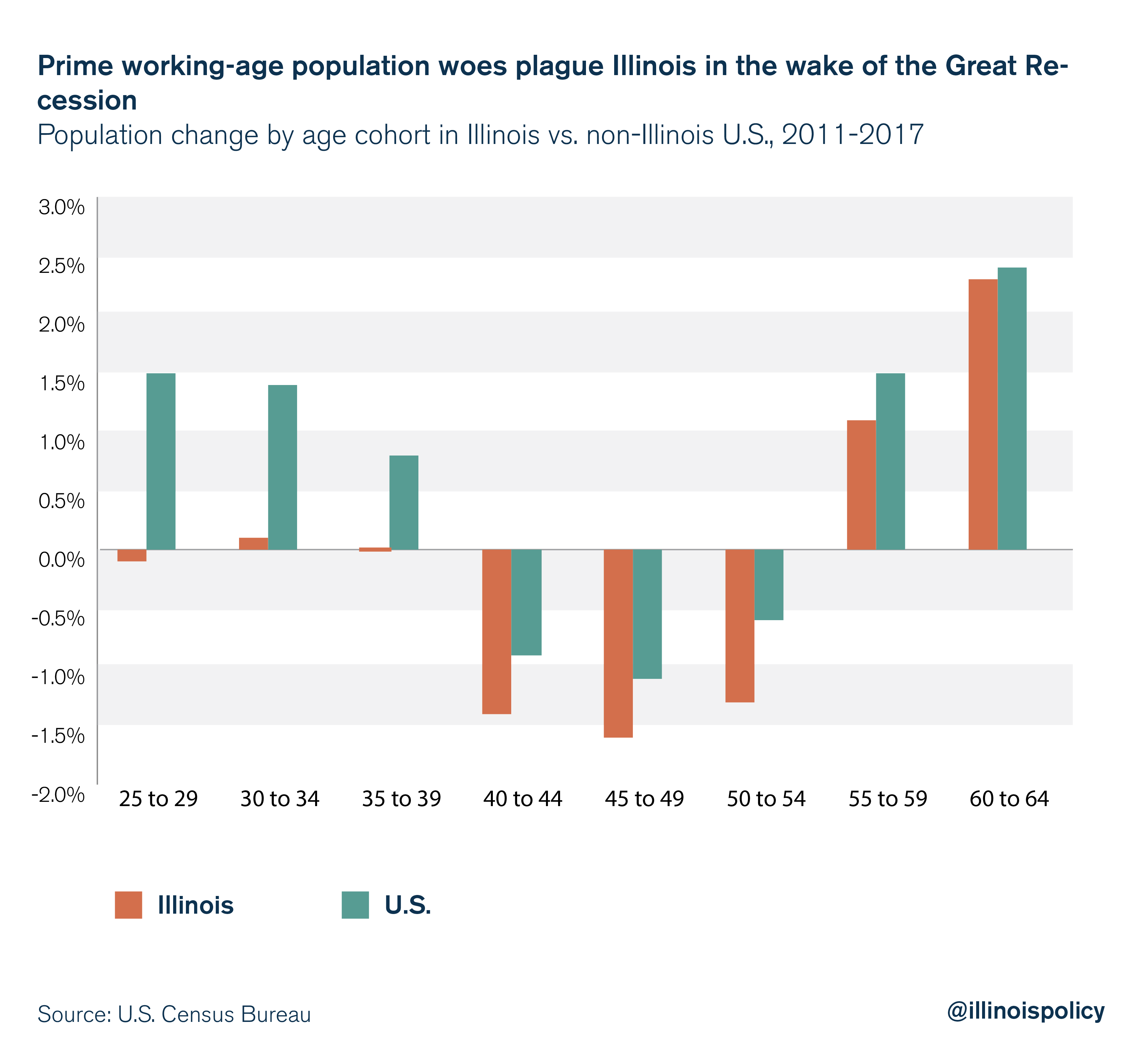"One year ago, the Illinois General Assembly passed a 32 percent income tax hike. Standing as the largest permanent income tax hike in state history, lawmakers hiked the personal income tax to 4.95 percent from 3.75 percent and the corporate income tax to 7 percent from 5.25 percent.
The tax increase not only meant that Illinois families saw less money in their pockets this year, they also experienced a weaker jobs market.
Since the end of the Great Recession, Illinois has seen average annual jobs growth of 1.11 percent, according to the Bureau of Labor Statistics. But in the year since the income tax hike, Illinois’ employment growth was just 0.74 percent, a 34 percent decline.
Meanwhile, jobs growth in the rest of the U.S. remained virtually unchanged relative to its post-recession trend.
A weak jobs market means wages in Illinois will continue to grow slower in Illinois than in the rest of the country.
Beyond jobs growth, Illinoisans saw a concerning change in unemployment trends as well. For the remainder of 2017 after the income tax hike, Illinoisans found themselves unemployed 20 percent longer – 12 weeks from July to December compared with 10 weeks from January to June, according data from the U.S. Census Bureau. For the rest of the U.S., unemployment duration remained unchanged at 9 weeks throughout the year.
Expert literature: Tax hikes harm economic growth
Illinois lawmakers need to learn that hiking taxes on families and businesses is not simply a political action, it’s an economic policy decision that has serious negative consequences for job creation and living standards. There is a large body of expert literature that addresses the effects of tax hikes on economic growth.
Romer and Romer (2010) find that tax increases have a negative impact on real gross domestic product. This is because tax increases have a large and sustained negative impact on investment. These results are consistent with the findings of Blanchard and Perotti (2002) and Mountford and Uhlig (2009).
The expert literature also demonstrates how taxation influences labor market outcomes. Pissarides (1998) finds that a 10 percent cut in taxes levied on employers can reduce unemployment by up to 1 percentage point, while also increasing wages by about 3 percent. Berger and Everaert (2010) also suggest that reducing labor taxes to fight high unemployment may be useful in countries with strong unions.
Divergence: Illinois vs. the rest of the nation
Although the rest of the nation has enjoyed faster economic growth since the end of the recession, Illinois’ underperformance means the gap between the Prairie State and the rest of the U.S. grew more than expected.
One reason why Illinois’ employment growth will be even further hindered in 2018 is that the prime working-age population is shrinking in Illinois.
Census data reveal that in the wake of the Great Recession, Illinois’ prime working-age population has declined 5 percent while the U.S. prime working-age population has grown 1.4 percent. Over this timeframe, Illinois saw weaker growth in every prime working-age population cohort. The most severe divergence was in ages 25 to 29, which grew 1.5 percent nationally but shrunk in Illinois.
Illinois has seen four consecutive years of population decline, driven by far more people moving out of the state than moving in. And the main culprit behind Illinois’ population decline is not retirees moving away, but rather working-age people seeking greener pastures. The tax hike can be expected to encourage even more working-age Illinoisans to flee the state."
Tuesday, July 3, 2018
After 2017 income tax hike, Illinois slows while nation grows
By Orphe Divounguy & Bryce Hill of the Illinois Policy Institute. Excerpt:
Subscribe to:
Post Comments (Atom)


No comments:
Post a Comment
Note: Only a member of this blog may post a comment.